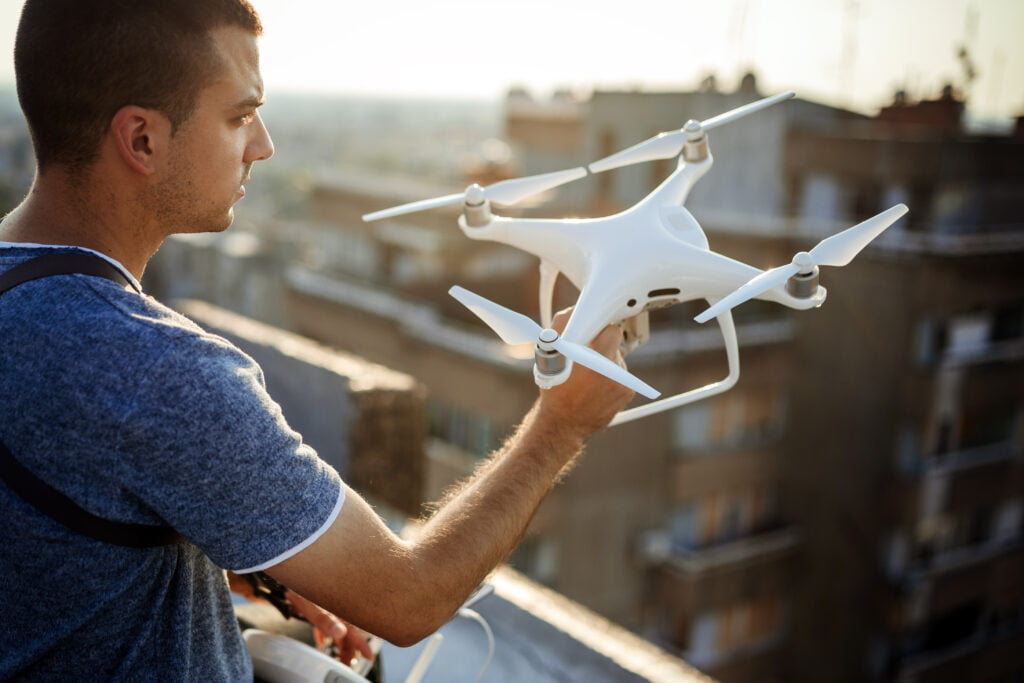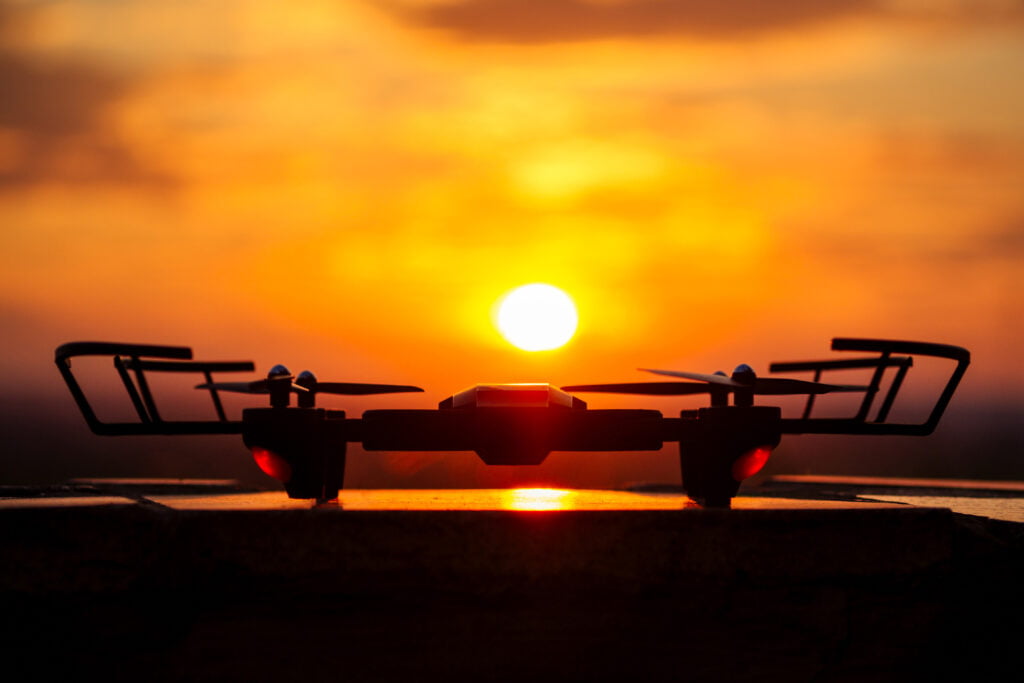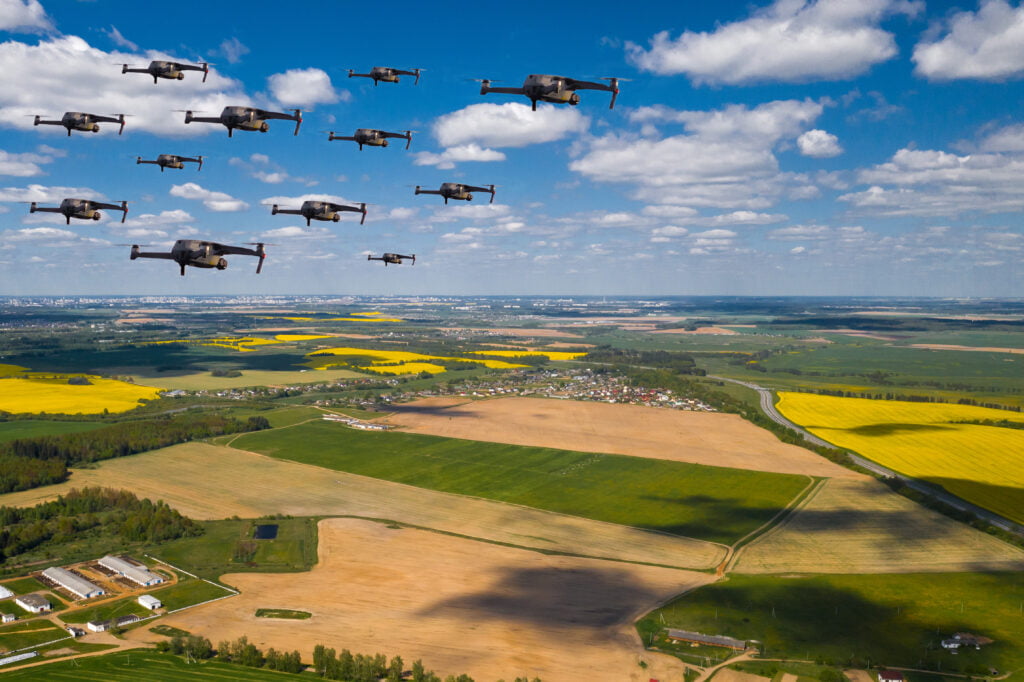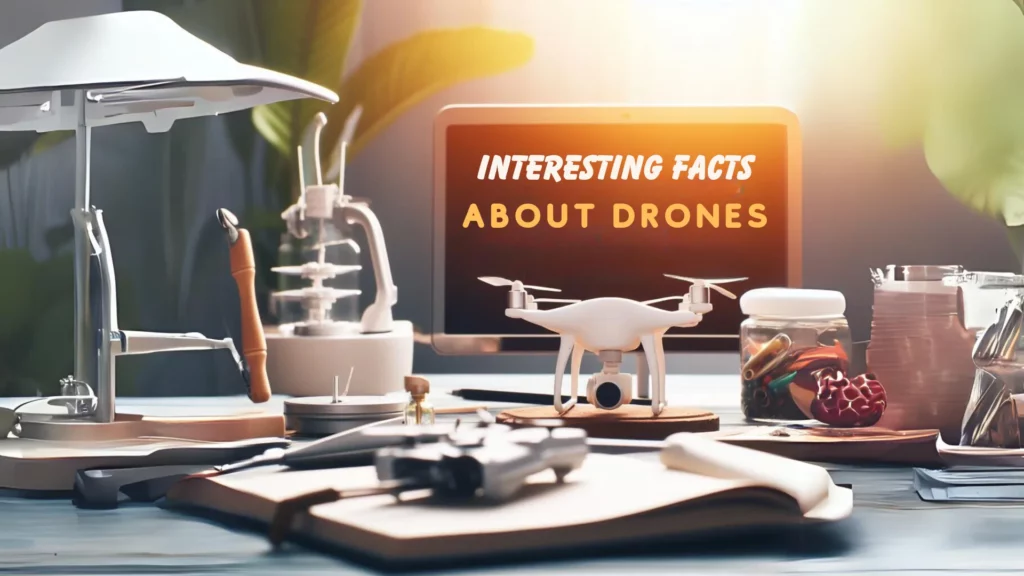20 Interesting Facts About Drones

Drones, also known as unmanned aerial vehicles (UAVs), have surged in popularity in recent years. They are used by people across various industries, from photographers to farmers, to capture unique aerial views and access hard-to-reach places. Many associate drones with the modern era, but these unmanned aerial vehicles have been around for over a century.
The first pilotless aircraft was developed in 1916 by two British inventors, Archibald Low, and Charles Kettering. Their unmanned ‘aerial torpedo’ was designed for use against enemy ships and submarines during World War I. Today, drone technology relies heavily on artificial intelligence (AI) to enable advanced functions like facial recognition, object tracking, and autonomous navigation. This gives drones the ability to “think” and adapt to situations
A Brief History of Drones

Many people associate drones with the modern era, but unmanned aerial vehicles have been around for over a century.
- The first pilotless aircraft was developed in 1916 by two British inventors, Archibald Low, and Charles Kettering. Their unmanned ‘aerial torpedo’ was designed for use against enemy ships and submarines during World War I.
- The term ‘drone’ originated in the 1930s when the British Royal Navy referred to their radio-controlled aerial target aircraft as ‘Queen Bees’. This led to calling subsequent target drones ‘drones’.
- During World War II, the U.S. Navy teamed up with actor Reginald Denny to develop target drones. Known as the Radioplane OQ-2, over 15,000 of these early drones were built by the end of the war.
- The Predator drone first entered service in 1995 and has been used extensively in conflicts across the Balkans, Iraq, Afghanistan, Pakistan, and elsewhere. The Predator was the first armed drone to see combat.
- The massive Global Hawk surveillance drone entered service in 2001. With its 130-foot wingspan, the Global Hawk can fly at high altitudes for over 30 hours to provide real-time battlefield surveillance.
Drone Technology and Capabilities

With sophisticated sensors, navigation, and communication systems, today’s drones can do much more than early target drones.
- Drone technology relies heavily on artificial intelligence (AI) to enable advanced functions like facial recognition, object tracking, and autonomous navigation. This gives drones an ability to “think” and adapt to situations.
- Multispectral sensors on agricultural drones allow farmers to monitor crop health and spot disease outbreaks. Specialized camera filters help drones detect crop stress invisible to the naked eye.
- Thanks to GPS, advanced sensors, and obstacle avoidance technology, many consumer drones now have sophisticated automated flight modes that allow them to track subjects or fly pre-programmed routes with minimal input from the pilot.
- Thermal imaging cameras equipped on drones enable firefighters to see through smoke to identify hotspots and find victims during search and rescue operations.
- The military is developing tiny insect-sized drones like the Black Hornet micro UAV. Weighing just 0.6 oz, these tiny drones can conduct surveillance missions while drawing little attention.
Commercial and Consumer Uses

Beyond military applications, drones are now used widely in commercial industries and also for consumer recreation.
- Real estate agents use camera drones to take appealing aerial photos and videos of properties they are selling. Unique aerial vantage points allow buyers to get a better sense of the neighborhood.
- Police departments utilize UAVs for surveillance, pursuit, and search & rescue operations. Drones provide a cost-effective alternative to helicopters for air support and recon.
- Utility companies use camera-equipped drones to inspect transmission lines, cell towers, wind turbines, and other infrastructure in remote areas to spot damage and perform maintenance.
- Conservation groups have deployed surveillance drones to combat poaching of endangered wildlife. The drones provide constant aerial monitoring of remote protected areas too large to patrol on foot.
- Professional filmmakers employ drones with high-end cameras to capture unique cinematic shots. The nimble versatility of drones allows creative angles not possible with traditional equipment.
- Drone delivery services have taken off recently, with companies like Wing receiving FAA approval to deliver consumer packages by air. Drones could revolutionize delivery, especially in remote regions.
- Drones have become a popular hobby, with enthusiasts using them to take photos and videos. First-person-view (FPV) goggles even allow drone pilots to experience the thrill of flying as if they are in the drone.
- Drone racing has evolved into an intense sport, testing the skills of pilots as they maneuver drones through complex courses at breakneck speeds exceeding 90 mph.
- Engineers have created drone swarms – coordinating the flight of multiple drones. Swarming allows drones to collaborate on tasks and missions too complex for a single drone.
- NASA has flown drones in the thin Martian atmosphere to scout ahead of rovers and reach rocky terrain impossible to access on the ground. Drones will play an integral role in future planetary exploration.
Key Takeaways on Drone Technology
The Future of Drones
Drone technology will continue advancing quickly, becoming smarter, faster, and more capable. Here are some exciting possibilities that may become reality with drones in the near future:

Drones have already revolutionized industries and opened up possibilities never before imagined. But the most transformative applications likely still lie ahead. The future with drones looks bright – and full of flight!
Conclusion
In conclusion, drones have come a long way since their inception. They have become smarter, faster, and more capable. Here are some key points to remember:
The future of drones is bright and full of potential. We can expect to see more innovative uses of this technology in the coming years.
Frequently Asked Questions About Drones
What industries use drones and how do they use them?
Drones are used across many commercial industries including agriculture, construction, insurance, infrastructure inspection, wildlife conservation, search and rescue, delivery services, and more. Common applications include aerial monitoring and mapping, photography/videography, cargo transport, public safety support, and field surveying.
What are the main benefits drones provide?
Key advantages drones offer are mobility, versatility, and unique aerial perspectives useful across various applications. They also improve safety by taking the human pilot out of dangerous situations. Drones efficiently cover large areas and are often more cost-effective than manned aircraft.
What are some downsides or concerns with expanding drone use?
Potential downsides include crashes, collisions, invading privacy if improperly used, enabling criminals if not well-regulated, disturbing wildlife, and saturating airspace. However, technology to mitigate these risks is improving through geofencing, sense-and-avoid systems, and traffic management.
How fast can hobbyist drones fly compared to racing drones?
Consumer hobbyist drones typically max out around 50 miles per hour, while specialized racing drones can exceed speeds over 90 mph. The current drone racing speed world record is 163.5 miles per hour, set in 2018 by a custom racing quadcopter.
How are drones commonly controlled?
Most hobbyist drones are controlled with a handheld RC transmitter or via smartphone/tablet apps that link to the drone via WiFi. Commercial and military drones often use more sophisticated proprietary controllers and satellite communication links to control drones from huge distances.




